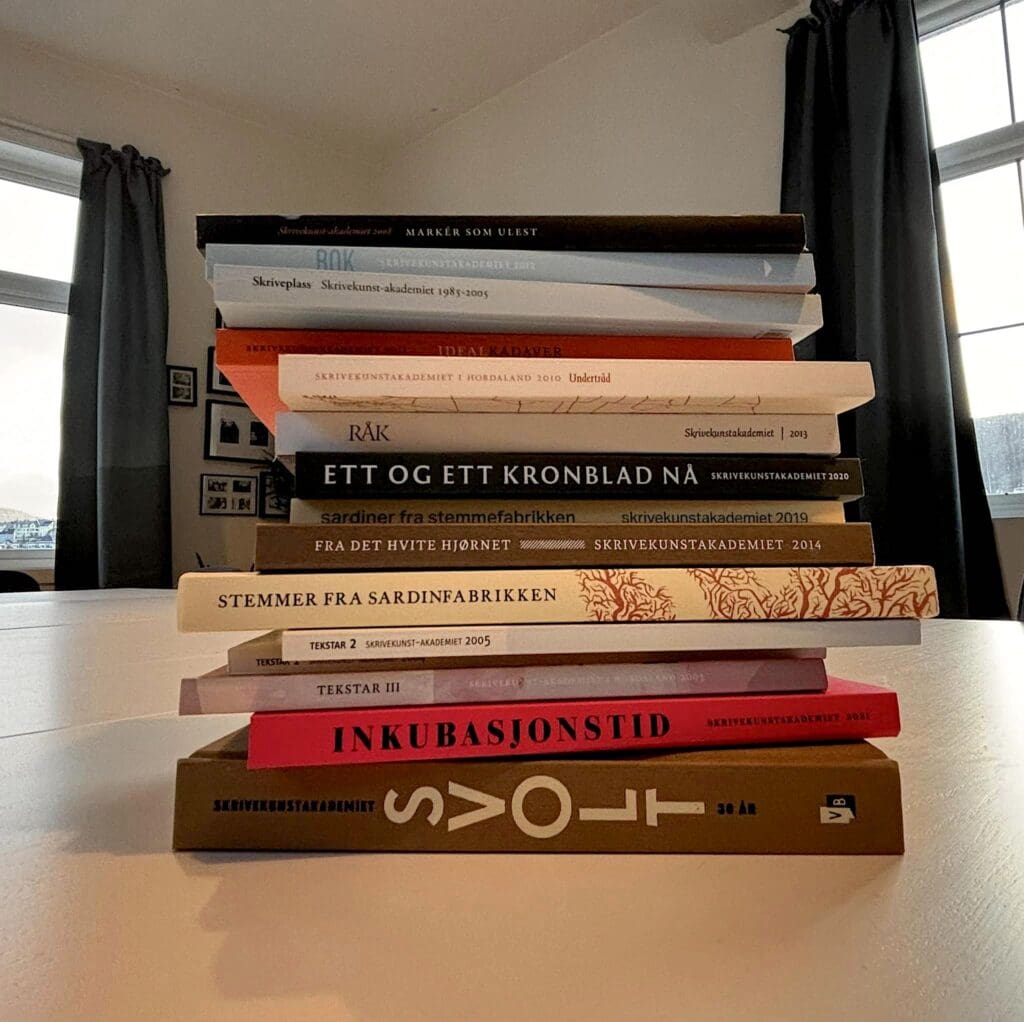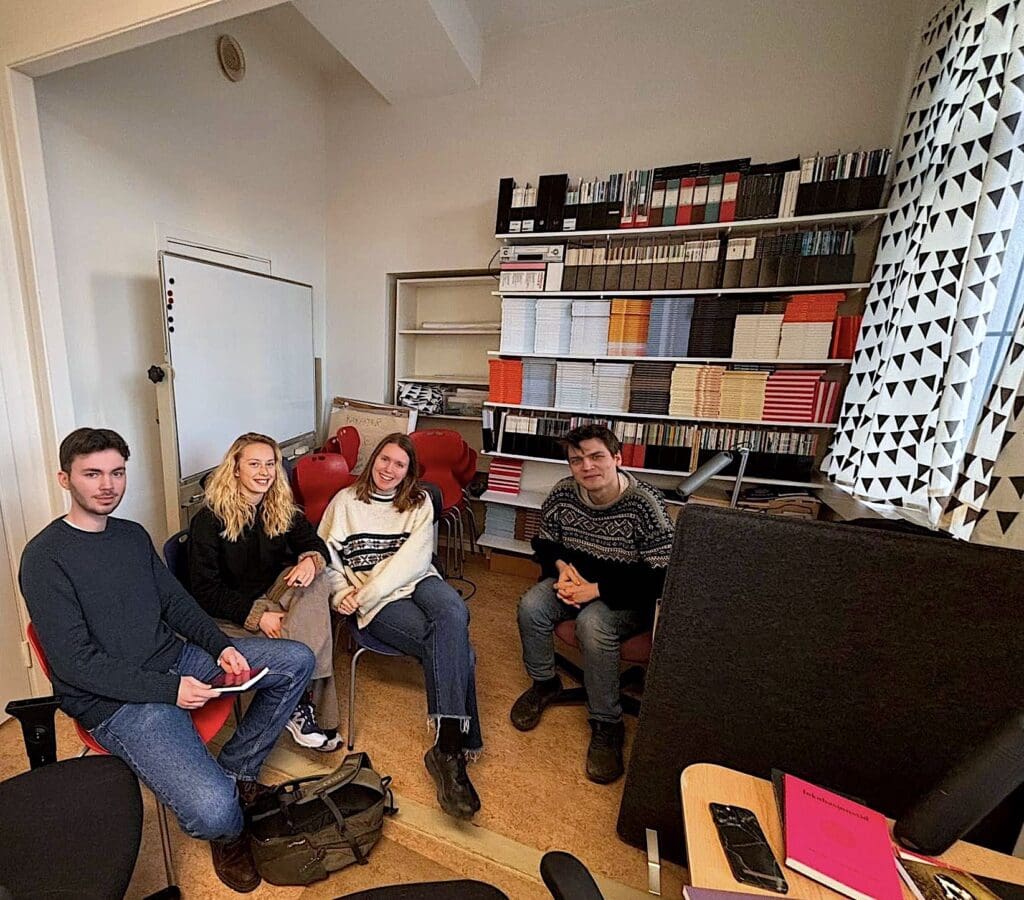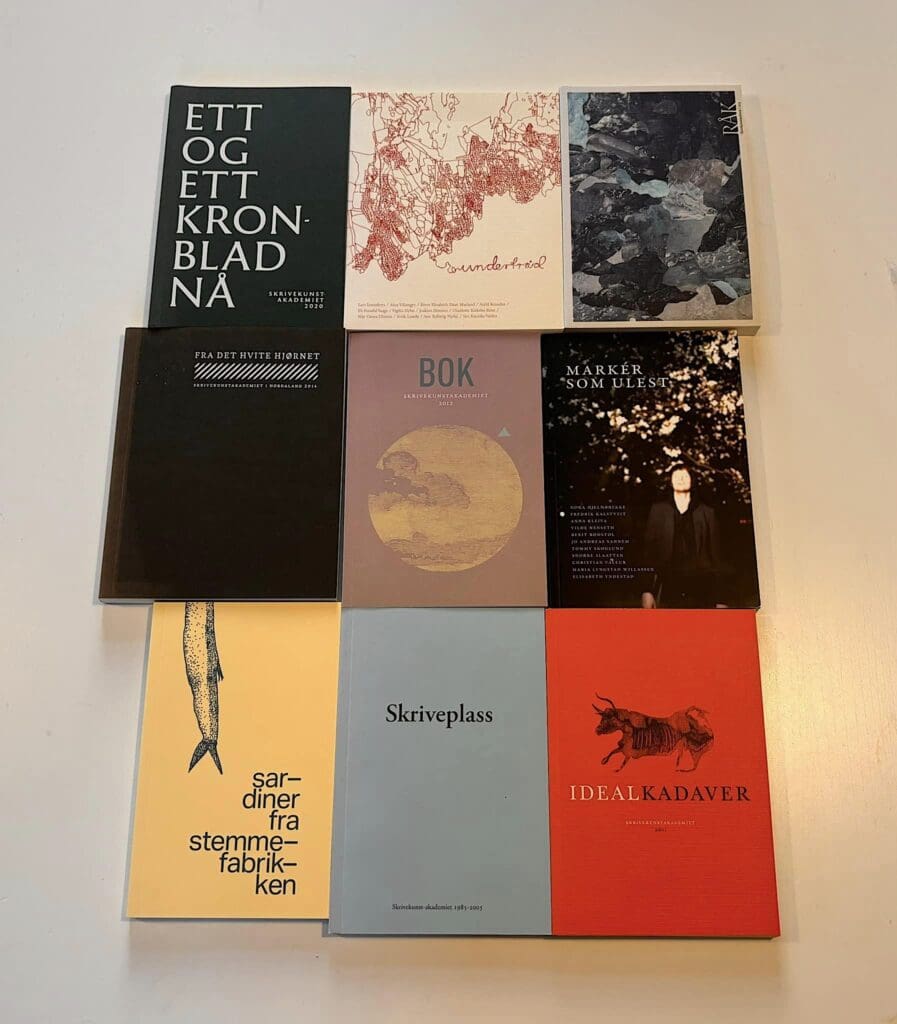Interviwer: Ljiljana Maletin Vojvodić //
Founded in 1985 by author Rolf Sagen and Hordaland County (Vestland), the Writing Academy (Skrivekunstakademiet) is more than just a literary institution. It is a cultural cornerstone, fostering creativity and contributing significantly to the Norwegian literary scene. What makes Bergen’s Writing Academy, situated in USF Verftet, so special, apart from the well-known fact that Karl Ove Knausgård described his student days at the Writing Academy under the mentorship of Nobel Prize winner Jon Fosse in „My Struggle„? The director of the Writing Academy, Norwegian writer Sivert N. Nesbø, answers these and many other questions.

Regardless of the focus on recent contemporary literature, the Writing Academy is not like a typical writing course. Can you briefly explain more about the objectives and the concept of the Writing Academy?
Skrivekunstakademiet was founded almost forty years ago and has been located in the same place since then, at USF Verftet, a former sardine processing plant which is now house to artist studios, music rehearsal spaces, film production auxiliary functions, writing and a dance school, which also provides space for concerts, theatre, and movies. Skrivekunstakademiet has through our practice and presence a long history of contributing to the literary field in Bergen. Not only do new students come to the city each year, but a lot of students also decide to stay and become a part of the literary milieu writing, performing, and producing books, anthologies, and periodicals. I believe it is important for a city to have a school of creative writing within its borders, a place that is an art academy for people who write. It can have a profound effect on what is being written, and on how one views literature in the vicinity.
Our main course is built around the literary genres, and we teach courses in longer prose, shorter prose, poetry, translation, essay, writing for theatre, literary process, literary sociology, literary theory, etc.
It can also be mentioned that Skrivekunstakademiet is one of three schools of creative writing at the University level in Norway. The other two, Forfatterstudiet i Bø and Forfatterstudiet i Tromsø, are part of the University of Southeast Norway and University of Tromsø respectively. Skrivekunstakademiet, on the other hand, is a free institution, i.e. we are not a part of the University of Bergen, but our study has NOKUT accreditation, so a full year gives 60 ECTS, similar to a full-time year at a University.

Probably, Knausgård was your internationally well-known student, but how many participants have become published writers?
Each year, we admit twelve students to our course, and a little over 40 percent of our total previous students have become published writers. Some years, six, seven, or eight students publish books, other years, one or two. It´s hard to predict exactly which of our students will become writers, but the overall number is around 40 percent. The ones who don´t make their literary debut, usually find their way working in publishing houses, libraries, in communication, etc.
I’ve read that you receive a substantial number of applications each year and choose only 12 participants; how challenging is the selection process?
We receive somewhere between 150 and 180 applications each year. Out of these, we select 12 students. The process of selection is interesting, but also quite work-intensive. A group of three to four members constitutes a committee, which reads every application thoroughly and then decides after a series of meetings during spring. The students provide a short letter of motivation and around 15 pages of text. These pages are the foundation upon which their application is judged. We do not conduct oral interviews, and the intake is thence based on the texts showing the students’ ability to write and to present a matter in a literary form.

How is gender equality addressed in the selection process?
We believe that a class consisting of only one sex does not necessarily provide the best environment for learning. It is generally more rewarding to have a more heterogeneous group. However, the quality of the applications is the main foundation and which the committee bases its decisions. Usually, there is an overweight of female applicants, something that is also mirrored in the students who are admitted. We wish to choose the best students; however, it is also important to try to make a class that will function as a constructive group, socially and intellectually. Sometimes you must take chances, and the quality of what is written will always be the most important factor.
Who are your target groups, and are there age limitations for applicants?
Usually, our applicants are between 20 and 35 years of age, but sometimes there are outliers. When I studied at the academy fifteen years ago, we had one student who was in his fifties, one in her late thirties, and two in their early twenties, straight out of public school. Usually, our students have studied some years at university earlier, either music, art, history of literature, psychology, philosophy or something in that vein. Or they have attended other writing schools, either in Norway, Sweden, Denmark, or elsewhere.

In Knausgård’s „My Struggle,“ we read that Nobel Prize laureate Jon Fosse was a lecturer. Vigdis Hjort, for instance (also well known among Serbian readers) served as a lecturer too. How many lecturers do students typically encounter per course?
Knausgård studied at Skrivekunstakademiet in the early 1990s. Jon Fosse was a teacher from 1986 to 1993. Fosse quit when his writing for the theatre picked up speed and his plays started gaining attention. Today, we have four writers that are employed permanently, and we typically invite somewhere between fifteen to twenty lecturers in addition, to teach some of the shorter courses, like “Writing for Theatre”, “Essays”, “Literary Theory” and so on. We try to invite writers from Sweden and Denmark in addition to Norwegian writers.
How significant is student evaluation for you? What do you learn from them about today’s youth, what kind of feedback do they provide, and do you make changes based on students’ feedback?
Evaluation from students play a significant role in our work for maintaining quality. The students provide thorough evaluation each semester, in addition to shorter feedback after each course. As a small institution, there is a short way from student to administration and staff. We usually have ample opportunity to accommodate student’s needs, if they are somewhat within our study plan and curriculum. This freedom to turn around and adjust our course is valuable and something we put great emphasis on.

Is it a challenge being a translator, a writer yourself, and also an Academy director?
It is extremely rewarding to be a leader of the academy and to be able to be close to the young people writing today, but it is also demanding to find and dedicate sufficient time to own projects. However, this is what I want to do now. I signed up for six years, and I am now halfway through. In three years, I will move on, leaving the ship to someone else. I am currently working on a project that consists of learning a new language through translation and simultaneously writing a novel. Naturally, this is something that needs a bit of time to bring to completion. The job as a leader of the academy is quite complex, as it consists not only of responsibility for artistic profile, staff, budget, strategy, communication, and financing but also heating, lightbulbs, watering plants, buying coffee, arranging meetings and trying to maintain the academy’s place in the literary field in Bergen.

Sivert Nikolai Nesbø is a Norwegian author and the academy director at Skrivekunstakademiet. He made his debut in 2013 with the novel ‘Skårgangar’ and has since released several critically acclaimed novels. In 2019, he published his first children’s book, ‘Hauk,’ illustrated by Susanna Kajermo. His latest novel, ‘Varme og vatn,’ was released in 2021. In the same year, he also released ‘Framom døden,’ a translation of William Faulkner’s ‘As I Lay Dying.’ For this work, he was nominated for the Bastian Prize.

Leave a Reply